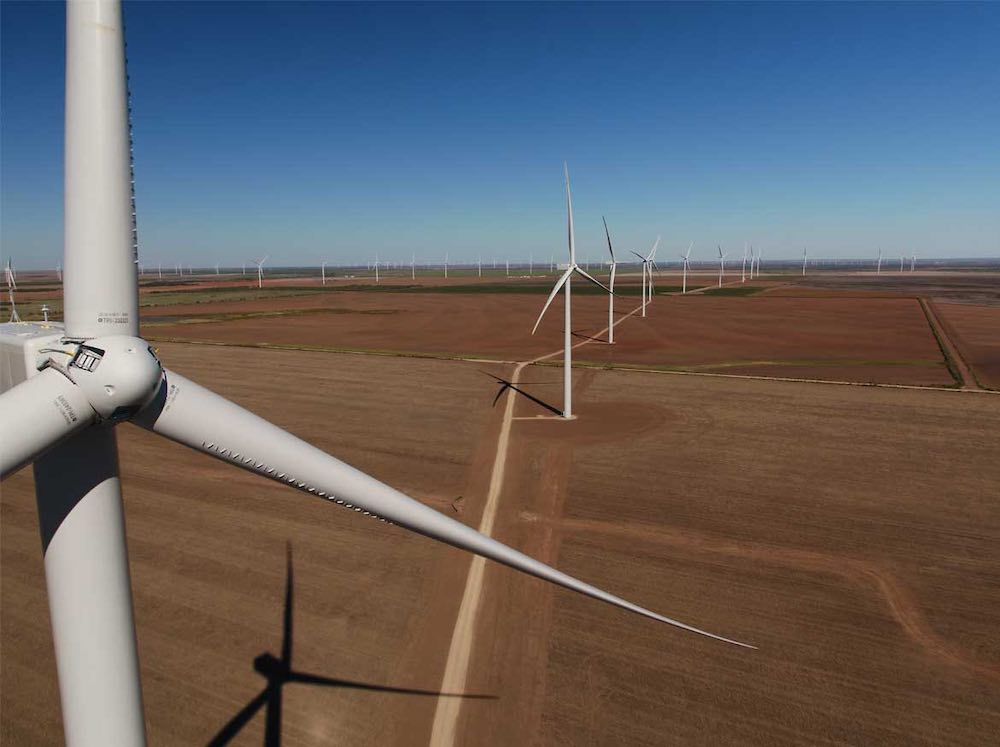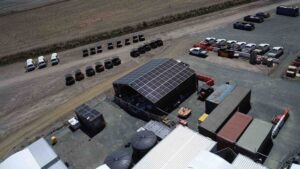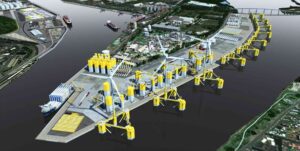Lawrence Berkeley National Laboratory’s annual update on the status of the US wind technology, cost trends and deployment is a perennial good read.
The latest version of the report, Land-based wind market report: 2022 edition, released in mid Aug 2022 provides an updated overview of data and trends in the US wind energy industry.
It says that despite the ongoing supply chain challenges, wind continued strong growth in 2021 with technology improvements and low prices. Last year, however, was not the best compared to 2020 but the long-term trend is upward as shown on the visual below.

With the addition of 13.4GW of new capacity and roughly $20 billion investment, wind comprises a growing share of the US electricity supply. The new additions represented 32% of all newly added generation capacity and accounting for more than 9% of the nation’s electricity supply.
Moreover, at least 247GW of wind are seeking transmission interconnection; 77GW of this capacity are offshore – an area thus far mostly neglected in the US – with 19GW as hybrid plants that pair wind with storage or solar PV.
The chart below shows the continued growth of wind installations from very low figures in 1998, and its spread across the US.

After China, the US has the world’s biggest installed wind capacity, roughly 140GW at the end of 2021 (table). But measured as a percentage of total generation, both countries lack leaders including Denmark, Ireland, Portugal, Spain and Germany (visual below) – whereas US and China rank 20th and 26th, respectively.
Having too much wind – or solar – in the electricity generation mix, of course, is a mixed blessing. It results in frequent episodes where wind generation exceeds total demand – with prices crashing as the excess supply must be exported, stored or curtailed.
Denmark can usually export the excess to neighboring Germany, who can usually absorb it without too much
trouble given its much larger system.
But in parts of the US – notably in the so-called wind belt (map below) – there is little spare transmission capacity available to export the power to neighboring regions. This results in frequent curtailment of wind generated energy.

The LBL report notes that incidents of wind curtailment are highest in SPP, ERCOT and MISO regions, in the range of 6-18% in recent years – much less elsewhere. The average for the US has risen from roughly 2% in 2016 to nearly 5% by 2021.
Another important development not covered in the latest LBL report is the growing interest in offshore wind – an area not previously explored to any extent. There are several projects already planned in the East coast as well as off the coast of California that could materialize in a few years.

The US is lagging behind Europe and China in offshore wind development, which tends to have less visual impact
and generally benefit from more steady wind which are ideally suited for today’s larger wind turbines.
The top 5 states in terms of installed capacity and wind as percentage of total generation, respectively, are shown in the table below.
In a handful of states including Iowa and South Dakota, wind now supplies more than half of the in-state generation averaged over the year.
While tax credits help, many of the top wind producing states are not “blue states” nor are they supporting wind for
environmental reasons. The simple reason is that they are windy and wind is cheap.

While considered a mature technology, performance of wind turbines nevertheless continues to improve with the average capacity factor among recently installed projects approaching 40%, considerably higher than earlier periods. The highest capacity factors are typically in the interior ‘wind belt’ of the country where wind is plentiful and steady.
Improvements in performance are attributed to ever larger turbines mounted on taller towers with longer blades – capturing more wind as they rotate. As recently as 2011 turbines blades 115 meters in diameter or larger were unheard of, but in 2021, 89% of newly installed turbines are that size or larger – a trend that is expected to continue especially with offshore turbines.
Recent supply chain disruptions and commodity price increases have resulted in wind energy prices to rise yet according to the LBL report, they generally remain low, around $20/MWh in the interior of the country with somewhat higher prices in the West and East.
After topping out above $75/MWh for power purchase agreements (PPAs) executed in 2009, the national average price of wind PPAs has dropped even as supply-chain pressures have resulted in increased prices in recent years. In the interior ‘wind belt’ of the US, recent prices are around $20/MWh.
In the West and East, prices tend to average above $30/MWh. These prices, which are possible in part due to federal tax support, fall below the projected future fuel costs of gas-fired generation – especially with natural gas prices currently high.
Despite the somewhat higher PPA prices, wind remains as an attractive carbon-free option since its costs
are generally low compared to wind’s value in wholesale markets.

The value of wind in wholesale power markets is determined by the location of wind plants, their hourly
output profiles, and how those characteristics correlate with real-time electricity prices and capacity markets in given markets.
The market value of wind increased in 2021, averaging
▪ $16/MWh in MISO;
▪ $19/MWh in SPP;
▪ $23/MWh in NYISO;
▪ $31/MWh in ERCOT;
▪ $33/MWh in PJM;
▪ $44/MWh in ISO-NE; and
▪ $48/MWh in CAISO.
Arguably the most important metric for any generation technology is the average levelized cost of energy (LCOE). According to the LBL report, the national LCOE for wind energy was $32/MWh for plants built in 2021, excluding the impacts of federal tax incentives (visual below).

The number varies by time and location and has been relatively stable in recent years. LOCEs were lowest in ERCOT, SPP, and the (non-ISO) West.
According to the LBL data, despite wind’s relatively low prices, at the margin it faces tough competition from solar and natural gas (visual below). Arguably all 3 are more or less viable – at the end it depends on location, access to transmission, wholesale prices and local conditions.

Both wind and solar are, of course, site-dependent. They are located where the resource is plentiful, land is cheap and suitable and there is access to transmission network. Gas has the advantage that it can be located where it is needed and has small footprint, even if its carbon footprint is not. But its price can be volatile depending on the market price for natural gas.
The other consideration is the issue of variability – which comes with most renewables, including hydro resources since the rainfall varies from year to year.
If gas prices remain high and wind and solar prices continue to fall, they will gain market share away from natural gas. But obviously other factors also play a role such as the variability of wind and solar vs. natural gas.
Tax incentives and subsidies at both the federal and state level as well as the prevailing renewable portfolio standards (RPS) also play at role.
In some markets such as CAISO and ISO-NE, wind’s wholesale market value – consisting of energy and capacity component – makes it attractive as illustrated in the visual on right, relative to other markets such as SPP and
MISO – which are already rich in wind resources.
This article was originally published by EEnergy Informer. Republished here with permission of the author.










